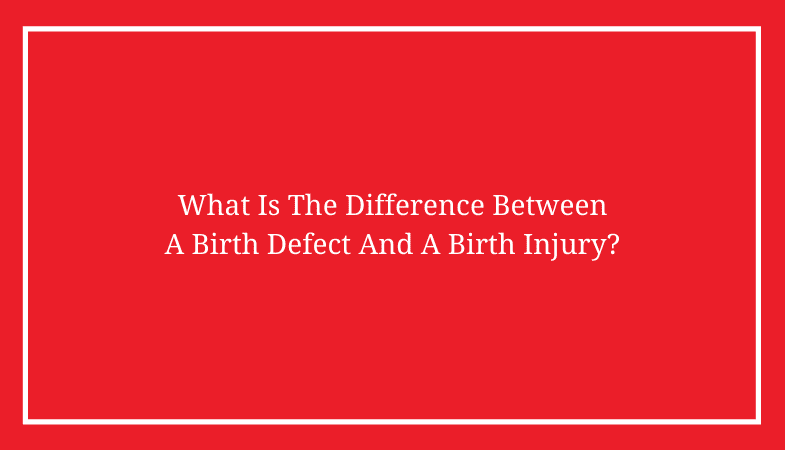When we welcome a new baby into our family, we trust that the medical professionals involved in the labor and delivery process deliver the child safely and in a way that meets industry standards. However, not all doctors, obstetricians, or nurses can uphold this standard – leading to severe, lifelong damage to our children before, during, and after delivery. Newborns are at risk for a number of health problems before they are born, including birth defects and birth injuries – and sometimes, a medical professional’s negligence or another party’s recklessness can be the cause.
What Is a Birth Defect?
Birth defects occur before labor and delivery, usually while the newborn develops in the mother’s womb. They are catastrophic injuries and can be internal, affecting organs such as the heart and kidneys, or external, leading to disfigurement and disability. Some defects impact the baby’s central nervous system, leading to serious issues that can impact a child’s development and ability to care for him or herself as he or she grows up.
Common birth defects include the following.
- Cleft palate
- Heart murmurs
- Down syndrome
- Spina bifida
- Atrioventricular septal defect
- Clubfoot
- Microcephaly
Many causes can contribute to the development of birth defects, many of which can involve a third party’s negligence or recklessness. Most commonly, birth defects are the result of genetic mutations in the child’s DNA, but this situation is far from the only cause. In some circumstances, exposure to toxic materials or dangerous medication prescriptions can harm a fetus’s development, leading to a birth defect.
What Is a Birth Injury?
On the other hand, birth injuries occur either during or soon after labor and delivery, and often involve the negligence of a third-party. They occur when the newborn sustains an injury during the birthing process, often resulting in complications that can impact the child’s life and development. Often, a birth injury is the result of negligent birthing practices or unavoidable complications during labor.
Common birth injuries include the following.
- Cerebral palsy
- Erb’s palsy
- Infection
- Broken bones and fractures
- Cephalohematoma
- Nerve damage
- Intracranial hemorrhage
Common causes of birth injuries include the use of dangerous birthing tools like forceps, failure to provide proper aftercare to the newborn, the baby being born in the breech position, and improper monitoring of the child or mother during labor and delivery, especially in terms of oxygen level monitoring.
Proving a Birth Defect or Birth Injury Lawsuit
If you want to file a birth injury or birth defect lawsuit for your child’s injuries, you will need to determine who is at-fault for the injury in question. The at-fault party or parties can be a medical professional involved in labor or delivery, including a doctor, obstetrician, or nurse. In birth defect cases, you could hold a corporation liable for improper toxic material disposal or a doctor who prescribed you dangerous medication.
To successfully prove your lawsuit and receive damages, you and your attorney will need to prove the following for elements.
- First, you need to prove that the at-fault party owed you or your child a duty of care. For example, medical professionals have a duty to uphold the industry standard of care when treating patients, and corporations have a duty to keep the public safe by disposing of dangerous chemicals responsibly.
- Next, you need to prove that the at-fault party breached his, her, or its duty of care to you or your child. For example, a doctor failing to monitor oxygen levels during delivery or a company disposing of toxic chemicals underneath your home would be breaching their respective duties of care.
- Third, you will need to prove that the birth injury or birth defect resulted from the breach of care. You may need to consult with a medical expert or another scientist to prove this element, depending on the facts of your case.
- Finally, you will need to prove that your child suffered damages that you can collect in the lawsuit. These damages can include past and future medical expenses, disability accommodations, the cost of live-in caregivers, medications, surgeries, and more.
If your child is grappling with the aftermath of a birth injury or a birth defect, you have legal options available to you. If you have not done so already, contact a California birth injury or Bakersfield personal injury lawyer to assist you with your case. Your lawyer can help you determine which damages you qualify for, collect the necessary evidence you need to prove your lawsuit, and build a compelling case in your favor.
